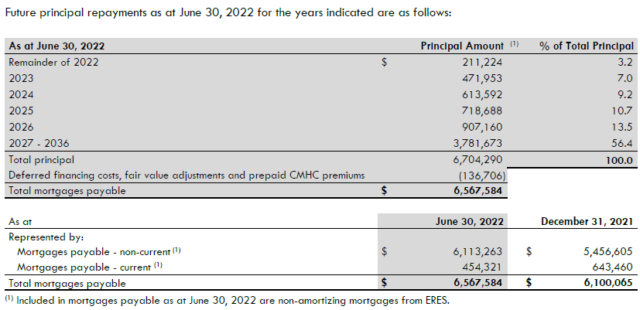An interesting financial gamble just commenced yesterday evening.
Dream Office REIT (TSX: D.UN) owns 28 properties (2 under construction), and currently about 63% of the square feet is lease-able in downtown Toronto. The consolidated portfolio is 80% occupied (84% with commitments), with the Toronto segment at 88%.
Just like other office REITs, D.UN’s unit prices have gotten killed over the past year for well-known reasons.
On D.UN’s balance sheet, their primary assets are $2.39 billion in investment properties, and about 26 million (effective) units of Dream Industrial REIT (TSX: DIR.UN) (fair market value: $383 million at March 31, 2023). There is also about $1.27 billion in debt. Some of the debt is secured with the DIR.UN equity. The net equity is $1.5 billion, and with 52.2 million diluted units outstanding, gives a net asset value of about $29/unit.
They announced they will be selling about half (12.5 million units) of their DIR.un for $14.20 a piece ($177.5 million gross) and then commence a SIB for 12.5 million of their own REIT (24% of diluted units outstanding) for $15.50/unit. This is $194 million gross.
A typical bought deal would cost about 4% of the gross, so D.UN is paying about $7 million for this transaction, plus another amount for the legal fees for the SIB, so let’s round it to a $200 million dollar transaction.
D.UN shot up from $12.61 to around $15.00 per unit today in response – clearly some arbitrage potential being priced in.
The $200 million dollar question is (and this applies to all of these office REITs) whether the $2.4 billion in properties on their balance sheet is actually worth $2.4 billion.
If so, Dream is trying to buy dollars for half-dollars.
If the properties are worth 71% of the stated value, then the proposition is break-even at best (not factoring in the leverage factor and lost income from the ownership of DIR.un).
If the properties are worth less than 71% of the stated value, then this is a value-destroying proposition.
Another interesting factoid is that Artis REIT (TSX: AX.UN) and related entity Sandpiper jointly own about 6.8 million units of Dream Office REIT. Will they tender?
This will be interesting to watch. I have no skin in the game here – in general, I am adverse to deeply leveraged entities in our existing macroeconomic environment.

